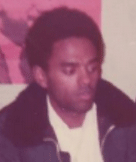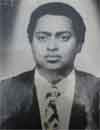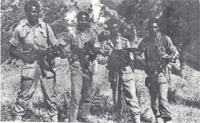The rise and demise of EFLNA/ENASA (1970-1979



"Most Eritrean mass organizations, either at home or abroad, were actively created by either the ELF or the EPLF, EFLNA's relatively uniqueness was that it formed independently of any existing pro-independence movement in Eritrea and sought to retain a measure of autonomy throughout its life"(Gaim Kibreab)
Researched and compiled by Resoum Kidane 22-5-2019
Relation between EFLNA and EPLF (1973-1978)
In the early 1970s when the Ethiopian armed forces were committing crimes against civilians at Arafali, Atshoma Ona and other villages, the former leaders of the Eritrean revolution were engaged in a power struggle instead of protecting the civilians from atrocities. Their power struggle contributed for the splitting of the ELF as well as the General Union of Eritrean Students (GUES). The GUES was formed by the Eritrean student unions in Bagdad, Damascus, Cairo and Europe in 1968. According Omar Jaber one of the founder members of GUES: “GUES became a full-fledged member of the International Union of Students (IUS) in Prague and helped introduce the Eritrean cause to international organizations of the day”.
As a consequence of the power struggle in 1970 GUES was spilt into GUES- Bagdad and GUES- Cairo to support PFL-ELF led by Osman Saba and ELF led by Idris Adem respectively. Furthermore, at the meeting held in Nuremberg in August 1971 former members of GUES from Europe also split to support PLF led by Issayas.
In 1971 when members of EFLNA met veteran political leaders ( Ato Woldemariam, Osman Saleh Sabbe, and Taha Mohamed Nur) who split from the ELF, they didn’t take their side butengaged in debate over the splitting of the ELF.
Andebrhan Welde Giorgis who was the Chairman of EFLNA in 1972, in his book “Eritrea at a Crossroads: A Narrative of Triumph, Betrayal and Hope” mentioned that "We are hungery for information concerning develoment in the field, we received a copy of NeHnan Elaman” Our Struggle and its Goals’ a declaratory statments by the PLF2 leadership and translated it from Tigrinya into English we circulated the pamphlet in Tigrinya among members and published the English version EFLNA organ Liberation." (2014.:445)
Adhanet Habte also recalls: “We started to communicate with both ELF and EPLF, the ELF never answered. but the EPLF, they sent us their goals and objectives, the one called NeHnan Elaman” Our Struggle and its Goals’ it was translated by Alemseged Tesfai and Haile Menkerios. A year later Haile Menkerios visited the field on a fact finding mission .Adhanet Habte adds that the repeated failure to connect successfully with the ELF reportedly frustrated EFLNA members and pushed them close to the EPLF.[Harper, 2009)
After three years of debate members of EFLNA decided to support the EPLF at the Fourth Annual Congress of the EFLNA which was held in Pavia (Milan) August 1973. The congress issued a joint declaration of EFLNA, the General Union of Eritrean Students (GUES-Cairo) known as the Pavia Declaration. In this declaration they declared their full support for national liberation in Eritrea headed by Eritrean Liberation Front-People Liberation Forces and recognized that group as the only genuine “Vanguard” of the Eritrean revolutionary struggle for national independence and condemned the “the Revolutionary Council” of the ELF. (Mehreatteab cited lib Vol.iii no.1 p.29)
After EFLNA declaring its support for the EPLF at the Fourth Annual Congress of the EFLNA, its members became aware of the EPLF suppression of dissent (The Menk’a members) which confused EFLNA member about the role of EPLF leaders in the purging of progressive fighters in late 1974 According to Hapner, the Menk’a members who were later executed by the EPLF had many friends and former classmate within ELFNA, and the incident disillusioned more than a few.
Many EFLNA activists questioned the EPLF’s internal democracy and about the fighters who were killed by the Front. Petros Yohannes, a student at Montreal University, was a member of ENASA in the USA, when he started inquiring about the injustice of the Menk’a group's arrest. Why were fighters who belonged to it imprisoned? They had asked only for democracy. And what other things had the EFL done? So what was the reason for Shaba’s split from the ELF?
Mengeastab who was an influential member of EFLNA’s leadership after raising similar question went to field in 1975 with Paulos Tesfagiogris to find out what had happened to the Menk’a group. According Dr Bereket Habte Selassie book Paulos Tesfagiorgis reported back:
“Those executed were guilty of incitement and creating division. Our report created calmness. We were the first people from the North American community who had been there, so no one could challenge us. Our word was the word. Single handed, we made the Front look fantastic”.
Paulos’s report on the dissident movement called Menk’a was based on the EPLF version, which denounced the movement as anarchist. Indeed the Menka’a movement led by Musie and Yohannes in the autumn of 1973 was a democratic movement which challenged the unelected ELF-PLF leaders and its leadership style was based on democratic centralism but it was neither anarchist nor regionalist. Regarding this Mengsteab Kidane (2005:51) states that Isaias was never comfortable with the new arrivals from Addis Ababa, especially with Mussie and Yohannes, He succeeded to brainwash a large number of his political operatives that the opposition was an Akele Guzai undertaking. In fact, Mussie and Yohannes Sebhatu were too internationalist in their outlook to fall for regionalist appeals.
In light of the above, the report presented by Paulos was baseless and not supported by Mengisteab. Dr Bereket also suggests that Mengisteab, Paulos’ companion in the trip to the Front, was suddenly seized with remorse for suppressing the EPLF’s alleged wrongs. Perhaps Paulos can clarify this point and supply the answer; meanwhile, however, it is reasonable to suppose that a feeling of guilt for making the EPLF “look fantastic” might have contributed to Mengesteab’s suicide barely a year after the fateful decision to break from and condemn the EPLF(.338-339)
The issues on human rights violation which was raised by EFLNA didn’t get much attention by its members after Paulos’s report. Thereafter the link between EFLNA and EPLF strengthened considerably. In late 1975 a small group of EFLNA members visited the field via Sudan probably to be recruited as representative of the EPLF within the EFLNA.

EFLNA members who visited the field in Eritrea, in 1975
Regarding this Harper states that visits to the field changed the way EFLNA activists thought about the nationalist revolution. Gebrehiwet Kahsay remembers how his visits to the field shifted his consciousness:
“I stayed [in the field] about six months. It was a very long time, but by the time I went I had a really clear picture of what was going on here [Eritrea], and with the commitment of what we have to do to helping homeland and maybe up to that time we were thinking of supporting, helping, in many ways, but for me personally that was a turning point, to be fully committed, and work full time…… Like after my visit to the field, as I told you, with all kinds of debates and discussions, there was no difficulty for me to understand which idea was right, because I saw what was going on……”
The writer of this document who was a member of the Information Department at Belekat and Zero in 1975/1976 also recalls that during that period member of EFLNA visited the EPLF departments. Among those who briefly visited the Information Department were: Tsegai Denish, Yamane Gerbera and Hagos Gebrehiwet (Kisha). It could be in this period that Hagos Gebrehiwet (Kisha) and other members of EFLNA were recruited by the EPLF. At around the same time a large number of the recruits who had joined the EPLF from high schools and university became disillusioned by the imprisonment of Menka leaders and by the EPLF’s mistrustful attitude towards educated fighters.
In the mid 1970s students who came from Addis Ababa University and abroad were always suspected without justification of sympathizing with the Menk’a movement and some of them were imprisoned. Stefanos Danyo and, Mogos Fasil former member of EFLNA who joined the EPLF IN 1974 were imprisoned in 1976 because of this,
Although educated fighters were imprisoned, executed and tortured, in July 1976, the EFLNA executive Committee wrote to all branches, study groups, and individual members to answer the charge from Eritreans in Europe that the EPLF had killed Marxists in the field. The organization denied such killings and attacked the document as false and vehemently defended EPLF’s policy and stand. (Lib.1-5?)
Questions could be raised here how the EFLNA tried to deny the killing of Marxist Eritreans like Goitom Berhe (Bitsay) who was a law graduate of Addis Ababa. Goitom and his group became a target for the clamp down on “radicalism “. This occurred after the liquidation of Menk’a in 1975. The new democratization movement had emerged in late 1975. It was called Bitsay Menkiskas because it was led by Bitsay Goitom Berhe, a law graduate of Addis Ababa university. According to (Dr.Alazar Gebre-Yesus) Goiton contributed a lot to the development of the EPLF by translating political philosophy texts into Tigrigna language. One of his translations was 'Zente Mogot' from which Sheabia learned a lot. Further he introduced and taught the Philosophy of Comradeship: Who is a comrade? (Men Eyu Betszai? Men Eyu Sewrawi?).
In reaction to this Haile Menkorias was instructed by Essays to translate a number of Marxist works to Tigrigna. The writer of this document who was a member of the Information Department at Belekat and Zero in 1975/1976 recalls Haile Menkorias translating a number of Marxist works to Tigringna (eg, State and Revolution , The Communist Manifesto, What is to be Done, One Step Forward, Two Step Backwards and some of Mao’s works, the titles of which I cannot remember. We carried out the process of printing and packaging of the publications but we were not allowed to read them because we were ordinary members. In those days, if someone tried to read Marx’s works they could be targeted.
Sherman (1980:64) also states that in 1976 perhaps as many as 200 young EPLF intellectuals were arrested. Solomon Woldemariam, who was in the EPLF leadership from 1971-1977, suggests that the number of people killed was much larger. Solomon added that around one thousand fighters who participated in the Menka movement were rehabilitated after undergoing serious political indoctrination and self-criticism ( Mengiseab,49:2005).
Furthermore the close relationship between the EPLF and EFLNA developed when Osman Saleh Sabbe’s who was the EPLF foreign mission left from the EPLF.According to Plaut,( 2016:171) Sabbe-withheld all finacial and logistical assistance in an attempt to pressurise the leadership of the EPLF to submission. When the flow of external resources dried up suddenly, the EPLF leadership made a U-turn and appealed to the leadershipd of EFLNA and EFLE to be affilated to the Front and to substantially increase their financial contribution. The response from exiles was extraordinary: Across North America and Europe EPLF supporters abandoned their studies and took up full time work in order to fund the movement. They moved into crowded apartments to save money so that they could increase their donations.
Regarding the strenth of the relationship between the EPLF and EFLNA. Hepner(2009) also states that in 1975 the link between EFLNA and EPLF strenthened considerably. The close relationship developed partly due to increased visits by EFLNA delegates to the field, as well as Osman Saleh Sabbe's departure from the EPLF and alleged looting of the front's financial resources. At that point the EPLF made strong overtures to EFLNA asking for financial assistance in particular. Already many EFLNA activists had quit school inorder to work several jobs to raise money for the EPLF.Often living eight or ten to a single apartment, members dedicated all of their time and majority of their resources to support the struggle at home.On average EFLNA raised over 200, 000 per year and sent it directly to the EPLF. With an active membership of perohaps 500 members as its hight, this averaged about 4, 000 dollars per person per year.After the departure of Osman Saleh Sabbe, Haile Menkores became an interim representative of the EPLF in Europe and North America, from 1976 until the EPLF’s first Congress which was held in January 1977. I believe that Haile Menkores, who was a former member of EFLNA and had joined the EPLF in 1973, might have played a key role in recruiting and influencing members of EFLNA to become part of the EPLF’s mass organizations. According to an article published during that year in Liberation vol.5 no.1, the Tigrinya version stated that EFLNA had become a mass organization of the EPLF. Additionally at the Seventh general congress of EFLNA which was held from August 18 to 22, 1976 in Washington, the EFLNA reaffirmed its support for EPLF .
When the EPLF held its first Congress in January 1977 Andebrehane and Mengesteab who participated in the Congress representing EFLNA, gave the EFLNA political report to the Congress. Andebrhan Welde Giorgis was also elected to the Front's Central Committee.
Mengesteanb participated inthe EPLF’s first Congress but was not elected to the Front's Central Committee because he had criticised the EPLF leaders for violations of the basic rights of the fighters and had struggled, from mid 1970s to 1979, to retain the EFLNA’s autonomy. For further information about Mengesteab click on this link.